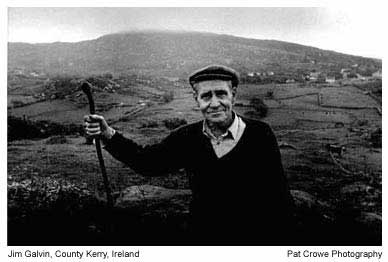
 |
|
|
|
|
#1 |
|
Member
Join Date: Jun 2007
Location: Detroit (New Mayapan)
Posts: 96
|
The word "shillelagh" makes me think of a knob-handled cane which can double as a fighting stick. Generally something of this size- not very large or thick:
 However, ever since "Gangs of New York" came out, I've been fascinated with the enormous shillelagh carried by William "Monk" McGinn.       I'm making the assumption that it's actually a shillelagh instead of just a club, since Monk was from Ireland and had already had the thing long enough to tally 40 kill-notches in the handle. I guess I'd call this a "war shillelagh" since it obviously couldn't double as a walking stick. Monk also has a lanyard that he wraps around his wrist. Given the weight of a shillelagh this large and heavy, however, the lanyard is understandable. It also looks like he had the end painted, perhaps with tar or pitch. Dipping the head in hot tar would certainly seal any cracks and enhance its durability. So, has anyone here ever seen or heard of a shillelagh that big? Or is this just strictly the idea of the movie prop makers? |
|
|

|
|
|
#2 |
|
Member
Join Date: Mar 2005
Location: Austin, Texas USA
Posts: 257
|
Your first picture is a blackthorn stick or bata. The movie weapon is a cudgel or Sail-Éille used in Bataireacht.
|
|
|

|
|
|
#3 |
|
Member
Join Date: Jun 2007
Location: Detroit (New Mayapan)
Posts: 96
|
If I google "Sail-Éille", I get sites that say a Sail-Éille is a shillelagh.
 This site says that a bata mór or tríú is a 4-footer, used with two hands. In any event, were cudgels like this used, or is this simply a film prop? If they were, does anyone have examples? |
|
|

|
|
|
#4 | |
|
Keris forum moderator
Join Date: Aug 2006
Location: Nova Scotia
Posts: 7,233
|
Quote:
http://images.google.com/images?ndsp...h&start=0&sa=N |
|
|
|

|
|
|
#5 |
|
Arms Historian
Join Date: Dec 2004
Location: Route 66
Posts: 10,569
|
What a fascinating, and extremely esoteric topic Queequeq!!!
From what I can understand, the original 'sail elle' (phonetically shillelagh, shill ay lee) was literally, a cudgel with a strap. The term 'bata' was applied in Irish to 'stick', thus the term 'bataireacht' described the martial art used by the Irish in the trained use of this simple, but most effective weapon. It appears that the use of these extends into antiquity but by the 18th century had become keenly associated with a form of ganglike warfare with groups known as factions. This led to extremely negative perceptions of the Irish culture and the much maligned connotation of these weapons. The subject of the fascinating, but gruesome movie "The Gangs of New York", colorfully portrays this phenomenon, which was certainly widespead in other nationalities and cultures as well, but here focused on the 19th century in New York. The most common wood seems to have oak used in these, and they were apparantly cured and hardened with smeared butter in chimneys, though with increased trade bringing in more exotic hardwoods from tropical regions, other woods were used also. With the martial intent of these, many were 'loaded' in hollowed section of the business end with lead. Perhaps this might have been the intended image of the very formidable weapon used by 'Monk' in the movie.I'm not sure if pitch or such substance would secure this hollowed and filled feature, but it does seem implied. It does not seem there were specific sizes, and as these were quite personally fashioned weapons, it would most likely have been a matter of preference. The notching shown in the movie weapon for 'kills' is most probably related to this dynamic used in literature and romanticized licence. It has long been popularly held that in the American frontier's 'wild west' that gunfighters would place notches in the handles of thier guns for each victory. In considerable research, it seems that this practice is yet another of the myths perpetrated by storytelling writers, and of the actual weapons of these individuals, none are known to carry notches. It is however noted that Bat Masterson once deliberately did this to a revolver sold to a souvenier hunter. This 'notching' is another interesting topic that has been discussed on our forums previously, and was really pretty interesting. From an anthropological point of view, what strikes me as really interesting is the convergent development of the simple club and its varying forms as a weapon. For one example, the shillelagh seems very similar to the 'knobkerry' of Zulu and associated tribes in South Africa. While in most cultures, the familiar 'club' used from mans earliest times was supplanted by many other weapon forms, but in these, it developed into these forms and prevailed. All best regards, Jim |
|
|

|
|
|
#6 | |
|
Member
Join Date: Mar 2005
Location: Austin, Texas USA
Posts: 257
|
Quote:
 . .
|
|
|
|

|
 |
|
|